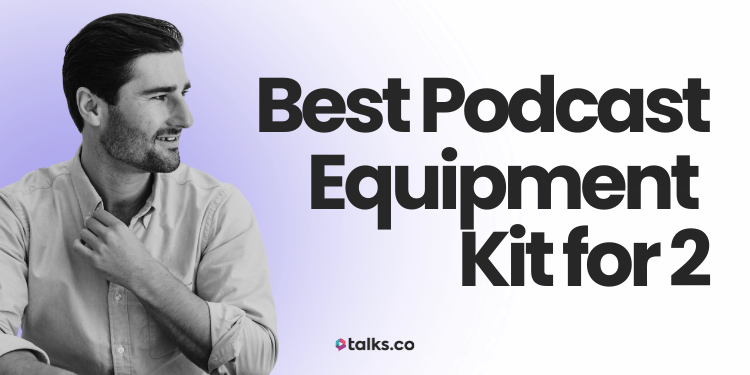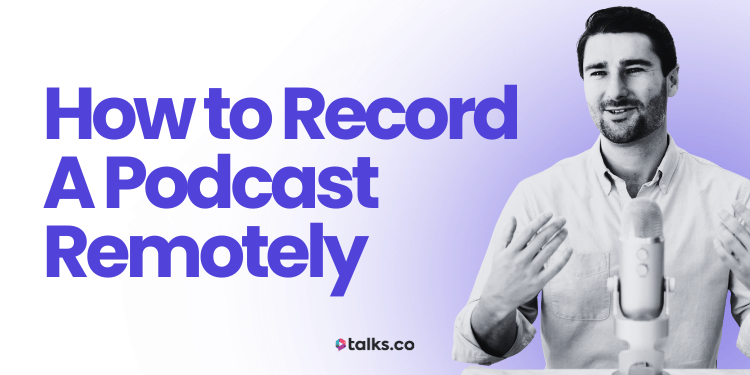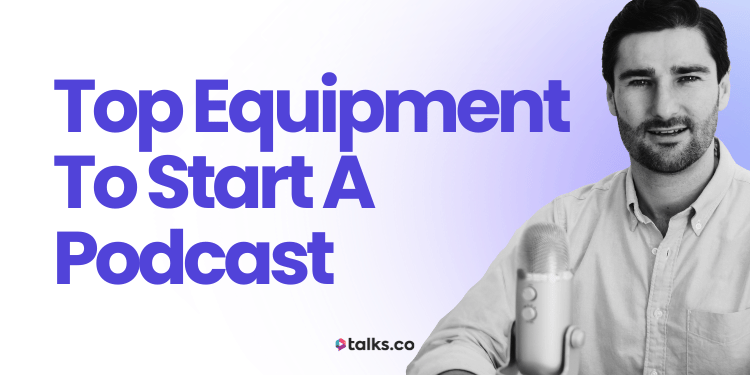Imagine a packed room, a few sharp voices on stage, and the kind of energy that makes people sit forward in their seats. That’s a successful panel discussion.
And if you’re here, it’s because you’ve seen the power of it and you’re asking yourself, “How do I get in on that?”
You’re not chasing theory. You want reach. You want credibility. You want to grow your show and connect with the right audience members.
A panel can give you all of that… If you know how to run it, join it, and keep it engaging.
This guide gives you the playbook.
Formats, roles, scripts, questions, examples. Everything you need to make panel discussions work for your podcast and your virtual event goals.
What Is a Panel Discussion?
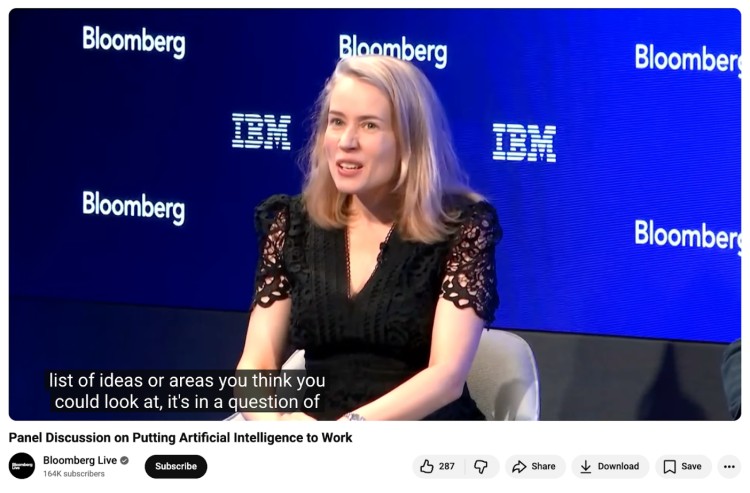
A panel discussion is when a small group of experts, leaders, or practitioners sit together to talk through a specific topic in front of an audience.
Instead of one person delivering a keynote, you get multiple perspectives, stories, and experiences in the mix.
For podcasters, it’s like giving your audience front-row seats to a mastermind.
What is a panel discussion format?
Panel formats shape how the conversation flows and how the audience experiences it.
- In-person: Live stage, audience in the room, moderator steering. Think conferences or live podcast tapings for in-person panel discussions.
- Virtual: Fully online via Zoom, StreamYard, or Riverside. Great for global reach.
- Hybrid: Mix of live and remote. Keeps the buzz of a room while widening access.
What happens in a panel discussion?
Most panels follow a simple flow:
- Kick-off: Panel moderator introduces the topic and guests.
- Discussion: Questions spark stories, strategies, and debates.
- Audience Q&A: Live questions or pulled from chat.
- Takeaways: Each speaker drops their one big insight.
What are the types of panel discussion?

The format sets the tone. Pick one that helps bring together the energy you want:
- Roundtable: Circle setup, casual back-and-forth, mastermind style.
- Traditional: Moderator leads, panelists answer. Classic conference look.
- Debate-style: Debate: Opposing sides clash on a hot topic, high energy like AI AGENTS DEBATE: These Jobs Won’t Exist In 24 Months!
- Forum: Question from the audience drives the talk, like a live town hall.
- Storytelling: Personal lessons and turning points take the spotlight.
- Fireside: Relaxed, intimate chat with light structure.
- Expert showcase: Quick mini-talks before open discussion.
- Problem-solving: The right panelists tackle a challenge live.
- Round-robin: Each panelist shares one quick lesson in turn.
- Lightning: Rapid-fire question and answer portion, short and sharp like 7 Questions In 7 Minutes.
What is a panel discussion example?
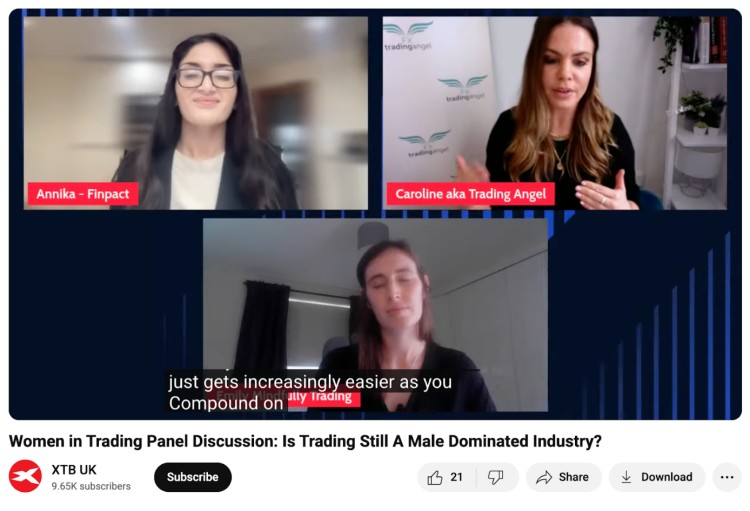
The easiest way to get what a panel feels like is to look at a few that have actually happened:
- Women in Tech (Product School): Leaders from Disney and Snap swapped real-world product management stories.
- Women in Trading (XTB UK): Traders clashed on whether finance is still a man’s world, mixing strategy with sharp debate.
- Inspiring Future Women in Science (Perimeter Institute): Scientists and pilots answered student questions live, turning talk into action.
Different setups, same goal: smart people tackling big topics in front of an audience.
What is the main purpose of a panel discussion?
Panels stack perspectives and build authority.
- More angles: One expert teaches, but a mix of voices gives your audience options.
- Credibility boost: Standing next to other heavy hitters makes you look sharper too.
- Connections: Panels are a fast track to new partners, clients, or podcast guests.
Importance of panel discussion
Panels make you harder to ignore.
- Energy: A group chat beats a solo monologue every time.
- Authority: You’re in the mix with other leaders, not talking from the sidelines.
- Reach: Every panelist brings their own crowd, so your visibility snowballs.
What Makes a Good Panel Discussion?
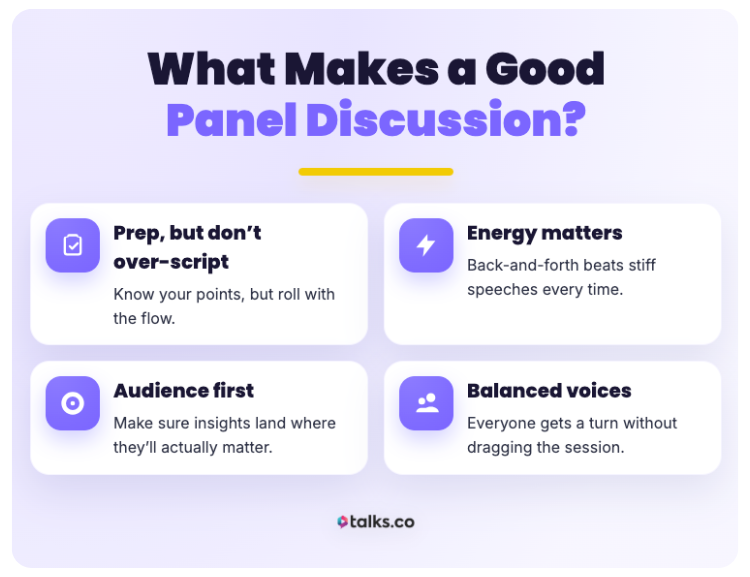
A good panel grabs attention and keeps it. It’s not just people talking, it’s a conversation that feels alive, useful, and worth your audience’s time.
- Prep, but don’t over-script: Know your points, but roll with the flow.
- Energy matters: Back-and-forth beats stiff speeches every time.
- Audience first: Make sure insights land where they’ll actually matter.
- Balanced voices: Everyone gets a turn without dragging the session.
Best topics for panel discussion
Pick topics that drive up interest, give takeaways, and keep the room buzzing.
- Trends and shifts: What’s coming next in your field.
- Challenges and fixes: Practical advice for common problems.
- Success or fail stories: Lessons people can actually use.
- Hot debates: Controversy keeps attention.
- Skills and strategies: Actionable tips to walk away with.
Who Are the Members of Panel Discussion?
A panel only works if everyone knows their spot. Each role has a job to make the discussion smooth, engaging, and valuable.
- Moderator: Steers the conversation, sparks debate, connects panelists.
- Host: Opens, introduces, and wraps up the session.
- Panelists: Share knowledge, add perspective, and engage with the moderator and audience.
What to do in a panel discussion?
Knowing your role is half the battle. Stay engaged, share your experience, and connect with the audience.
- Listen: React to what’s said, don’t just wait for your turn.
- Share stories: Real examples hit harder than theory.
- Keep it tight: One solid point beats a long-winded rant.
- Bring the audience in: Ask questions or get reactions.
How many panelists are there in a panel discussion?
Panels can work in different sizes, depending on your goals:
- Small: 2-3 panelists for an intimate, deep-dive discussion.
- Medium: 3-5 panelists are enough to keep it interesting without too much going on.
- Large: 6-8+ panelists work for big events, but structure questions carefully to make sure every panelist gets a turn.
Panel discussion moderator
The moderator keeps the conversation moving and makes it easy to follow.
- Guide the discussion: Ask questions that pull out real stories and actionable ideas.
- Link perspectives: Turn one panelist’s point into a thread for another.
- Engage the audience: Bring in live questions or comments to keep everyone involved.
Panel discussion host
The host sets the tone and keeps the panel running smooth.
- Open strong: Introduce the topic and show why it matters.
- Keep it flowing: Move naturally between speakers and questions.
- Close with impact: Highlight key takeaways and leave the audience with action points.
Panel discussion panelist
Panelists bring the insight, experience, and perspective everyone came for.
- Share real stories: Talk about wins, fails, or lessons that hit home.
- Keep it sharp: Make your point clearly and confidently.
- Interact naturally: Respond to other panelists and audience questions without overthinking.
Group Discussion Format
Group discussions put the spotlight on conversation, not just expertise. Unlike structured panel discussion formats, everyone in the room or on the call can contribute.
These sessions work best for brainstorming, workshops, or any session where the audience and participants share the floor.
Group discussion vs panel discussion
While panels focus on a curated set of experts, group discussions let everyone contribute.
- Participation: Panels have a fixed number of panelists, group discussions involve wider audience participation.
- Flow: Panels are guided by a moderator, group discussions move through key points organically.
- Purpose: Panels aim to share insight or authority, group discussions aim explore different perspectives and solve problems together.
Round table vs panel discussion
Round tables are all about equality and conversation.
- Layout: Everyone sits in a circle, no one is “above” anyone else.
- Interaction: Encourages back-and-forth dialogue rather than structured Q&A.
- Use case: Great for coaching groups, mastermind sessions, or intimate workshops.
Forum vs panel discussion
Forums flip the script, giving the audience control.
- Audience-driven: Most questions come from attendees.
- Moderation: The moderator’s role is lighter, mostly facilitating audience interaction.
- Example: Town hall meetings or open Q&A sessions with leaders.
Panel discussion and symposium difference
Symposiums are structured, formal, and often academic.
- Focus: Panels are conversational; symposiums are more like mini-lectures.
- Audience engagement: Panels encourage discussion; symposiums are mostly listening.
- Setting: Panels fit conferences, podcasts, or live events; symposiums often appear at universities or research events.
5 Best Panel Discussion Ideas
The right topic makes your panel feel magnetic. Pick something that invites debate and gives the audience takeaways they can actually apply.
- Behind-the-scenes of success: Panel members reveal what really goes into hitting big wins in their field.
- Unexpected career paths: Stories from people who took unconventional routes to expertise.
- Industry myths busted: Experts challenge assumptions everyone thinks are true.
- Rapid-fire problem-solving: Panelists tackle audience-submitted challenges on the spot.
- Cross-industry lessons: Insights that work in multiple fields, from finance to fitness or coaching.
5 Customer panel discussion ideas
Customer panels let the audience hear raw, real perspectives straight from the people who use your product or service.
- Feature showdown: Three power users argue which new product feature is worth keeping or scrapping.
- Pain points revealed: Customers share the exact roadblocks that almost made them quit.
- Unexpected hacks: One user demonstrates a workaround that saved weeks of work.
- Future wish list: Attendees hear what would make the product indispensable tomorrow.
- Real-life outcomes: Panelists explain how your product changed a workflow, a business, or a lifestyle.
5 Event panel discussion ideas
Event panels thrive on energy and audience engagement. Every comment and clap counts.
- Hot topic clash: Experts disagree on a major trend while the audience reacts live.
- Success stories deconstructed: Panelists break down what actually worked in a case study.
- Problem-solving live: Audience challenges are tackled in real time.
- Cross-industry mashup: Tech, finance, and coaching experts share how they approach the same problem differently.
- Takeaway blitz: Panelists drop bite-sized actionable tips in rapid succession.
5 Podcast panel discussion ideas
Podcast interviewing panels need rhythm, voice, and stories that sound great out loud.
- Listener Q&A: Panelists tackle questions pulled from social media and emails.
- Mini masterclasses: Each expert shares one practical step listeners can implement immediately.
- Behind-the-scenes stories: Panelists reveal mistakes that never hit their blog posts.
- Debates and predictions: Guests argue over what’s coming next in the niche.
- Insider lessons: Panelists dissect a real campaign, coaching session, or launch step by step.
5 Virtual panel discussion ideas
Virtual panels require energy that translates through a screen.
- Global perspectives: Experts join from different continents and share clashing approaches.
- Live demos: Panelists walk through a tool, workflow, or strategy in real time.
- Interactive problem-solving: Attendees vote on which issue gets addressed first.
- Scenario simulations: Panelists respond to realistic, high-stakes scenarios live.
- Rapid-fire lessons: Short, actionable insights from each participant keep the energy high.
5 Zoom panel discussion ideas
Zoom panels are tighter, faster, and visually driven since attention spans are short.
- One-minute tips: Each panelist shares a single actionable takeaway in under 60 seconds.
- Audience challenges: Live chat questions are answered on the spot.
- Screen-share how-tos: Tools or workflows are shown step by step.
- Topic rotation: Panelists tackle different aspects of a single theme quickly.
- Immediate takeaways: Every segment ends with one concrete action.
5 AI panel discussion ideas
AI panels combine bold predictions with practical panel discussion examples. Don’t be too abstract.
- Industry shakeup: Experts argue which jobs will vanish first due to AI.
- Tool testing live: Panelists demo AI tools and evaluate them on the spot.
- Ethics debate: Risks and responsible use are explored with concrete examples.
- Success stories: Real wins from AI adoption are dissected for listeners.
- Quick experiments: Panelists run a mini experiment during the session and analyze results.
5 Online panel discussion ideas
Online panels reach far but need crisp, compelling content to hold attention.
- Multi-niche mashup: Panelists from different fields tackle the same challenge.
- Case study snapshots: Quick, real-life success and failure stories.
- Audience-led flow: Viewers vote or comment to steer the discussion.
- Hands-on exercises: Panelists lead short, practical challenges.
- Instant lessons: Key takeaways viewers can implement immediately.
5 Interactive panel discussion ideas
Interactive panels turn audiences from passive observers into participants.
- Live problem-solving: Panelists work on real challenges submitted by attendees.
- Mini demos: Techniques, tools, or strategies are shown and tested live.
- Quickfire debates: Experts challenge each other’s ideas and opinions on the spot.
- Audience exercises: Attendees try small tasks alongside the panel.
- Poll-driven flow: Audience decides which topic the panel tackles next.
5 Panel discussion conference ideas
Podcast conference panels scale up and need to deliver value quickly to a larger audience.
- Trend deep dives: Panelists explain the biggest shifts in their industry.
- Expert spotlights: Each panelist shares a skill or insight that sets them apart.
- Step-by-step case studies: Real successes and failures broken down in detail.
- Live Q&A: Audience questions are answered to keep the discussion engaging.
- Actionable takeaways: Each segment ends with clear, implementable steps.
5 Good topic for panel discussion ideas
Pick topics that hook the audience and give them something to chew on.
- Photography storytelling: Travel photographers break down how they make shots feel alive.
- Dating dynamics: Coaches tackle what works and what doesn’t on modern dating apps.
- Music production workflow: Producers compare gear, software, and creative hacks that actually work.
- Green entrepreneurship: Founders debate which sustainable ideas are worth backing.
- Edtech innovations: Teachers and developers share hybrid classroom tricks that stick.
5 Good panel discussion questions
Questions that get straight to the point and spark real insight.
- What’s the biggest mistake new photographers make?
- How can singles stand out in crowded dating apps?
- Which tool changed your music production game?
- What pivot saved your startup when things got messy?
- Which online learning tactic keeps students actually engaged?
5 Interesting panel discussion topics
Topics that feel current, niche-focused, and worth talking about.
- Travel photography trends: The shots that get noticed in 2026.
- Dating culture shifts: What’s really happening in singles’ lives now.
- Indie music marketing: How to get heard without blowing your budget.
- Sustainable business hacks: Startups making eco moves that work.
- Gamified learning: Turning boring lessons into something students actually want.
5 Panel discussion ideas
Approaches that keep the panel lively and practical across different fields.
- Audience case studies: Solve real problems submitted live from viewers.
- Cross-niche swaps: Experts tackle challenges outside their usual field.
- Step-by-step wins: Panelists break down real projects or campaigns.
- Rapid-fire debates: Quick takes on opposing solutions that spark discussion.
- Future forecasts: Panelists predict where photography, music, startups, or edtech are heading next.
How Does a Panel Discussion Work
A panel discussion works when the conversation flows, the right voices are on stage, and the audience stays engaged from start to finish. It’s about timing, structure, and giving everyone room to shine.
How is panel discussion conducted?
Panels can be buttoned-up or laid-back depending on the crowd and setting:
- Formal panels: Corporate conferences or summits with moderator-led questions and a mostly observing audience.
- Relaxed panels: Comic-Con or niche events where panelists riff, joke, and feed off audience energy.
- High-energy panels: Quick-fire Q&A, live demos, or challenges keep the conversation moving and attention sharp.
How long is a panel discussion?
Panels vary depending on the setting and goal:
- Short panels: 20-30 minutes, ideal for podcasts or quick online events.
- Medium panels: 45-60 minutes, common at conferences and workshops.
- Extended panels: 90+ minutes, best for deep dives or multi-topic sessions.
How long should a panel discussion be?
Length depends on the topic and audience:
- 20-30 minutes: Quick-hit panels like photography tips or marketing hacks. Fast, focused, keeps energy high.
- 45-60 minutes: Conference or workshop panels, such as entrepreneurship or finance discussions. Enough time for insights and audience Q&A.
- 90+ minutes: Deep dives for relationship coaching, music industry, or creative writing panels. Time for case studies, stories, and interactive exercises.
Panel discussion consists of how many members?
It’s not just numbers. The right mix keeps the conversation sharp and engaging.
- Core expertise: 2 to 4-person setup of panelists who cover the main angles, like a founder, a marketer, and a UX designer on a “Scaling Tech Startups” panel.
- Contrasting views: One panelist with a different opinion to begin a debate, e.g., a traditional investor vs. a crypto strategist.
- Audience-friendly: Keep it small enough for everyone’s insight to get air time. Too many voices and points get lost.
Panel discussion advantages and disadvantages
Panels can boost authority and engagement but only if you plan carefully.
- Advantages: Offers multiple perspectives, actionable tips, and live debate in one session. Example: a 45-minute health panel covering fitness, nutrition, and mental wellness.
- Disadvantages: Can get messy, risk of off-topic rambling, or some panelists dominating. Large panels need tight moderation to keep everyone heard.
How to Organize Panel Discussion (Checklist)
A panel is only as good as the prep behind it. Nail the setup and everything runs smoother.
☐ Define your goal: What should viewers walk away knowing or doing?
☐ Pick a topic: Specific, timely, and worth tuning in for.
☐ Select panelists and moderator: Mix expertise and personalities who play well on camera.
☐ Plan the tech: Zoom, StreamYard, or Riverside setup, plus audio, lighting, and screen sharing.
☐ Prep questions: Blend pre-planned prompts with room for live interaction.
☐ Promote and follow-up: Drive sign-ups, then share clips, highlights, or recordings to keep the conversation going.
How to host a panel discussion
Hosting is about presence and control, not just talking.
- Set the tone fast: Open with a strong statement or challenge the audience can relate to.
- Keep it moving: Know when to jump in to prevent lulls or off-topic tangents.
- Audience as co-star: Call on reactions or short experiences to make them part of the panel.
How to moderate panel discussion
Moderators are the glue holding the conversation together.
- Balance the room: Make sure quieter panelists get equal air time.
- Spot the gold: Pull out key insights when a discussion heats up.
- Bridge differences: Connect contrasting opinions to keep dialogue productive.
Panel discussion with moderator do’s and don’ts’
Moderating a panel is about keeping the room sharp, the panelists confident, and the audience engaged from start to finish.
- Do’s: Start on time, brief your panelists, and keep everyone involved.
- Don’ts: Don’t play favorites, hijack the conversation, or let side chats drag the energy down.
How to set up a panel discussion
The setup affects flow and engagement. Don’t leave it to chance.
- Stage or seating: Arrange panelists so everyone is visible and feels part of a conversation.
- Tech check: Test mics, cameras, and screens before going live.
- Signage and timing: Clear instructions and a visible schedule help the audience know what to expect.
How to prepare for a panel discussion
Preparation separates good panels from forgettable ones.
- Know your panelists: Their background, style, and likely insights.
- Predict hot spots: Anticipate tension points or questions that could start a debate.
- Prep logistics: Confirm timing, tech, and any props or visuals.
How to prepare questions for a panel discussion
Keep your panel flowing smoothly with the Talks Question Generator.
- Enter your topic: e.g., “women in tech” or “online business growth.”
- Generate questions: Icebreakers, deep dives, and audience-focused prompts instantly.
- Pick and tweak: Keep what fits your panel, adjust the rest for flow.
- Extras on hand: Have backup questions for curveballs from the audience.
Prep fast, keep the conversation sharp, and make your panel feel effortless.
Panel discussion outfit
Dress sharp without overthinking it.
- Confident fit: Tailored but comfortable, so you can move naturally.
- Match the tone: Business panel = structured; creative niche = casual edge.
- Details count: Accessories or color can signal personality without being flashy.
Structure of Panel Discussion
A clear structure keeps your panel moving, your audience engaged, and your panelists on point. Plan the flow before the first “Hello” to make the session feel smooth, even if it’s live online.
How to structure a panel discussion
Most panels hit the same key beats. Think of it as your skeleton:
- Opening: Welcome, intro panelists, set expectations.
- Main discussion: Moderated questions, short debates, stories, insights.
- Audience interaction: Live chat, polls, or Q&A.
- Closing: Key takeaways and final thoughts from each panelist.
How to start a panel discussion
Starting strong sets the tone and grabs attention. Keep it short, clear, and energetic.
Example opening lines:
- “Welcome to [Panel Name]! Today we’re tackling [topic] with [Panelist Names], the people who actually make it happen.”
- “Thanks for joining! We’re breaking down [topic] and hearing real stories from [Panelist Names].”
- “Let’s jump in. Our panelists [Names] are here to show what works in [field] and what doesn’t.”
Panel discussion script
A script keeps the conversation sharp without over-rehearsing. Use the Talks Podcast Script Generator:
- Enter your topic.
- Pick format: solo, co-hosted, or guest panel.
- Get a ready-to-use framework with intro, thought-provoking discussion prompts, transitions, and closing cues.
Panel discussion example script
Quick fill-in-the-blank template:
Opening: “Welcome to [Panel Name]! Today we’re talking about [topic]. Meet our panelists: [Name 1], [Name 2], [Name 3], all experts in [fields].”
Discussion:
- Q1: “[Insert first question]”
- Q2: “[Insert second question]”
- Q3: “[Optional audience question]”
Transitions: “Thanks [Panelist], now [Next Panelist], your thoughts?”
Closing: “Each panelist, one key takeaway for our audience.”
Panel discussion introduction speech example
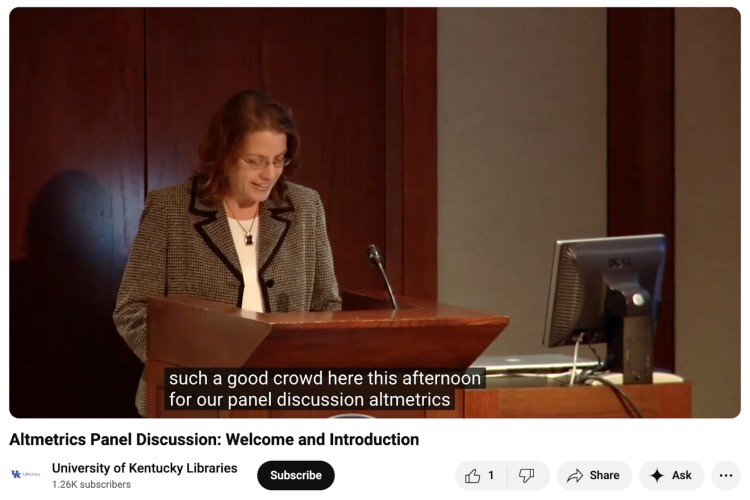
Start by letting your audience know what to expect.
Example:
“Hi everyone, welcome to [Panel Name].
We’re diving into [topic] with [Panelist 1], [Panelist 2], and [Panelist 3], who bring real-world experience from [industries/fields].
You’ll get actionable insights, stories, and a chance to ask questions. Let’s get started!”
Panel discussion moderator script
Use this script to keep the panel smooth and on track from start to finish.
Opening: “Welcome to [Panel Name]. Here’s the plan: [brief overview].”
Question flow:
- “[Panelist Name], how do you handle [topic/question]?”
- “[Next Panelist], your take?”
Audience cue: “Let’s grab a question from the chat. [Audience Name] asks…”
Closing: “Final thoughts from each panelist: [one sentence each].”
How to end a panel discussion
Close your panel in a way that matches the energy and purpose of your session:
- High-energy close: Leave the audience hyped and excited.
- Reflective close: Wrap up with insight and perspective.
- Action-focused close: Give the audience clear next steps to apply.
How to end a panel discussion example
Wrap up clearly so the audience knows what to do next and feels inspired.
Example:
“Thanks for being part of [Panel Name].
Before we go, [Panelist 1], [Panelist 2], [Panelist 3], any last quick insights? Connect with them on [social links] and continue the conversation online.
That’s a wrap!”
How to Write a Panel Discussion
The right tools make planning and scripting your panel simple.
- Talks Podcast Script Generator: Input topics and format for a ready-to-use script.
- Trello or Notion: Organize flow, questions, and panelist prep in one place.
- Google Docs: Collaborate on scripts and talking points in real time.
- Otter.ai or Descript: Record prep sessions and refine timing from transcripts.
- Canva or PowerPoint: Make visual prompts or slides to guide discussion.
Panel discussion format dos and don’ts
Follow these to make your panel run smooth and feel professional.
- Dos: Keep the discussion balanced, clear, and focused; brief panelists on timing; use audience engagement strategically.
- Don’ts: Don’t overload with too many topics; avoid letting one panelist dominate; don’t skip prep or tech checks.
Panel discussion title ideas
Your title sets the tone. Make it punchy and specific. Use the Talks Episode Title Generator to cut straight to options.
Just enter your episode topics and the tool spits out multiple title ideas built for your niche and panel angle.
How to cite a panel discussion in APA
When referencing a panel, keep it clear and structured so others can find it easily.
Format example: Last name, First initial. (Year, Month Day). Title of panel discussion [Panel discussion]. Event Name, Location. URL if online.
Panel discussion guide
A solid guide keeps your panel organized and ensures nothing falls through the cracks.
☐ Outline objectives: Know what you want the audience to learn or experience.
☐ Panelist info sheet: Include bios, talking points, and any prep notes.
☐ Timeline: Set clear start, discussion, audience Q&A, and closing segments.
☐ Tech checklist: Confirm audio, video, and presentation tools are ready.
☐ Backup plan: Have contingencies for late panelists, tech issues, or overruns.
Panel discussion names

Good names signal the niche and tone immediately. Here are five examples:
- “Crypto Frontlines” (finance)
- “STEM Horizons” (science/education)
- “Creative Grind” (music/arts)
- “Marketing Mastery Live” (marketing)
- “Relationship Reset” (coaching/dating)
Panel discussion session dos and don’ts
Plan each session so panelists and audience stay engaged.
- Dos: Keep segments timed and transitions clear.
- Don’ts: Don’t let one topic dominate or the panel drag.
Panel discussion set up
The right setup affects engagement, energy, and how smoothly the panel runs.
☐ Seating arrangement: Position panelists so everyone is visible and comfortable.
☐ Mic and tech placement: Test microphones, cameras, and screens beforehand.
☐ Audience layout: Ensure attendees can see and hear, whether in-person or virtual.
☐ Visual aids: Prepare slides, demos, or props to support the discussion.
☐ Signage and branding: Include clear event or podcast branding for consistency.
Promotion panel discussion strategy
Marketing your panel requires a clear approach for visibility and engagement.
- Dos: Leverage panelists’ audiences and create teaser clips.
- Don’ts: Avoid last-minute promotion or vague messaging about the topic.
Panel discussion technique
Stay on time and maintain momentum with these tips:
- Time each segment and stick to it.
- Prep a timer or moderator signals.
- Assign who answers which types of questions.
- Keep follow-up questions short.
Panel discussion tips for marketing
Marketing your panel takes creativity and strategy to get attention and engagement.
- Tease conflict: Highlight differing opinions among panelists to spark interest.
- Show behind-the-scenes: Share prep clips or funny moments for social buzz.
- Audience polls: Let viewers vote on topics before or during the panel.
- Highlight reels: Post short clips with key insights from each speaker.
- Micro-influencer collabs: Partner with niche creators to expand reach.
Your All-In-One Guide
You’ve seen what makes a panel discussion work: structure, prep, the right mix of voices, and questions that spark real conversation.
Now it’s your turn to bring it to life on your podcast.
With a free Talks Creator profile, you can line up expert panelists, manage questions, and streamline your panel setup all in one place.
No more endless back-and-forth emails or awkward coordination. Just focus on hosting a discussion that connects, informs, and energizes your audience.
Get started today and turn your next panel discussion into an episode your listeners won’t forget.
Create your free Talks creator profile right now.

